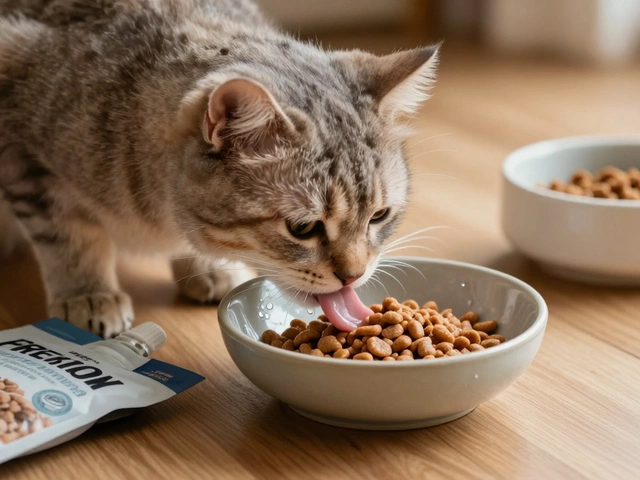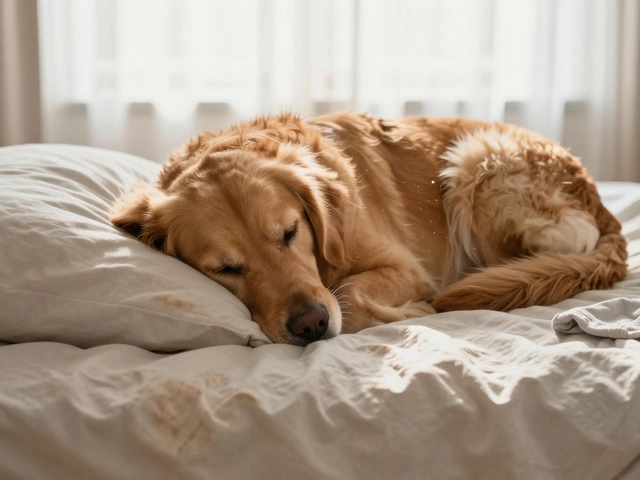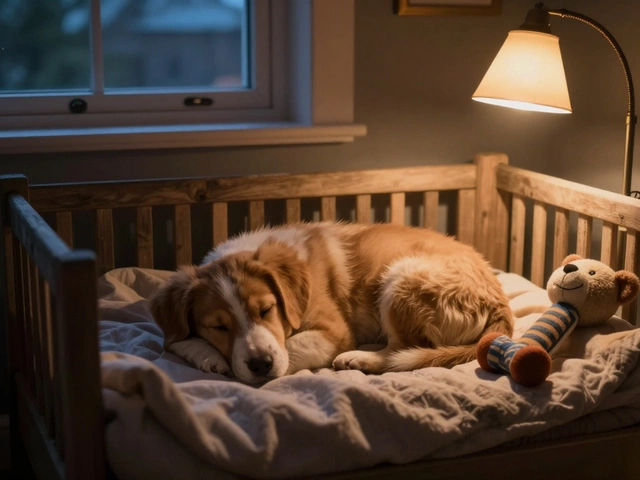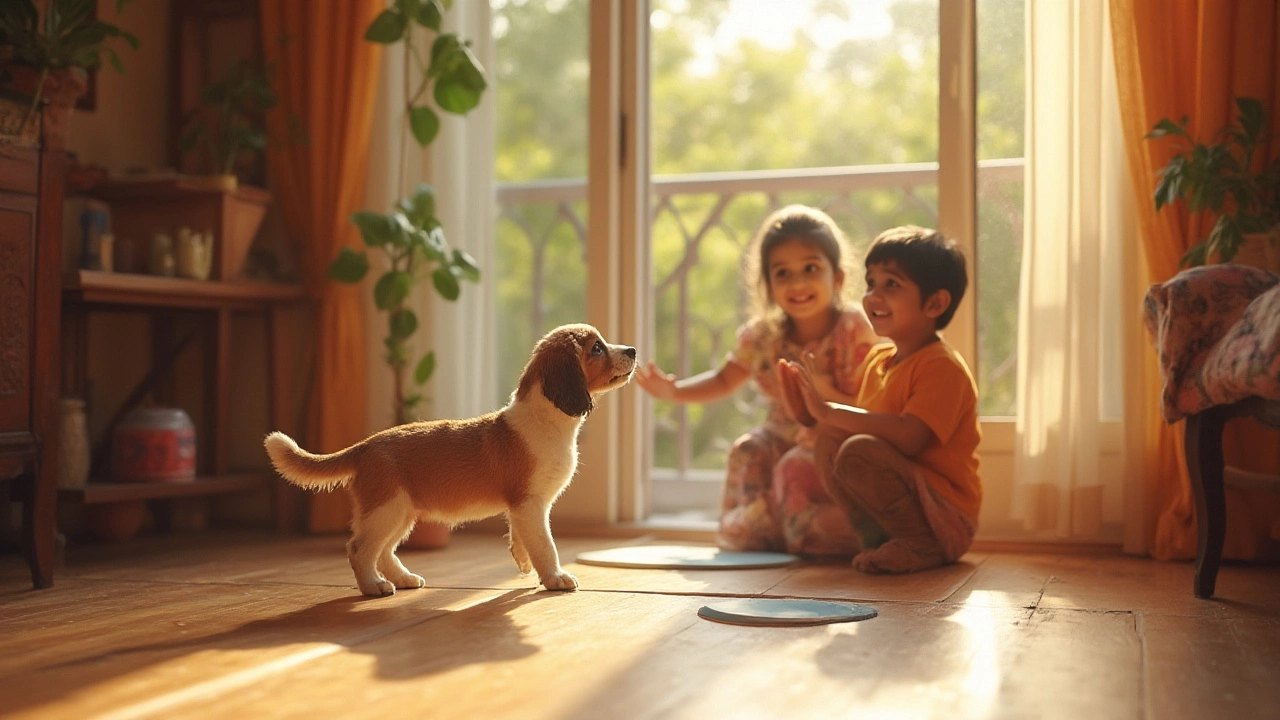
You bring home a wiggly puppy, your shoes get chewed, your heart gets stolen, and your carpet gets…oh, come on—is that another wet spot?! If you’ve been pacing your house, spray bottle in hand, and muttering about puppy bladders, you’re far from alone. It feels like puppies just don’t get the memo about where and when to “go.” So at what age should the little furball stop peeing in the house? The answer might surprise you, and the journey to a dry floor is peppered with both science and a bit of stubborn puppy magic. Let’s pull back the curtain.
Understanding Puppy Bladder Control and Development
Puppies are kind of like toddlers—adorably clueless and not born knowing the rules of your house. Bladder control isn’t something they have from day one. Newborn puppies can’t control their bladder at all. That’s why mom cleans everything up until about three weeks old. Once you bring your pup home, at 8 weeks or so, their bladder is tiny. A puppy this young simply doesn’t have the muscle control to hold it for long. Vets say that puppies can “hold it” about one hour for every month of age. So, a 2-month-old puppy? About 2 hours. A 4-month-old? Maybe 4 hours, but only if you’re lucky and not dealing with a hyper, easily distracted breed like a Jack Russell or a Beagle.
You probably didn’t know that the hardest time for a puppy to hold it is right after waking up, after a play session, and after eating or drinking. Their bladder acts like it’s on autopilot. In fact, most puppies don’t gain full voluntary control over their bathroom habits until about five or six months old. But there’s a catch. Some small or toy breeds take even longer because their bladders are so tiny, while a giant breed like a Great Dane may manage sooner—those big dog bodies can hold more. On the flip side, some rescue pups who’ve spent time in shelters or outdoors can experience delays, as their early environment didn’t promote clean instincts.
Very few puppies are perfectly house-trained before 12 weeks; most take until about 16 to 20 weeks old. Accidents after that aren’t abnormal, though. A recent study from the American Veterinary Medical Association found that about 80% of puppies still have accidents at five months, and a solid 50% still have accidents at 7 months. The real question isn’t age alone—it’s about persistence, the routines you set, and some pure old-fashioned luck.
There are a few red flags, mind you: If your pup is over 7 months, still peeing constantly inside, or suddenly regresses, you should chat with your vet. Medical issues like urinary tract infections, diabetes, or even anxiety can be the sneaky culprit. Sometimes, it’s not about learning, but about their little bodies needing help.
Puppies don’t want to pee where they sleep, eat, or play if they can help it. That’s instinct, but it needs a bit of coaching. The best thing you can do is keep their play and sleep spaces small at first—crates or puppy pens can be a lifesaver because dogs are less likely to pee in their beds. Just remember, keeping them in there too long is unfair and won’t help. Timing matters more than punishment or frustration. If you’re consistent, your puppy will gradually learn—as sure as socks vanish in the dryer and pizza tastes better cold the next morning.
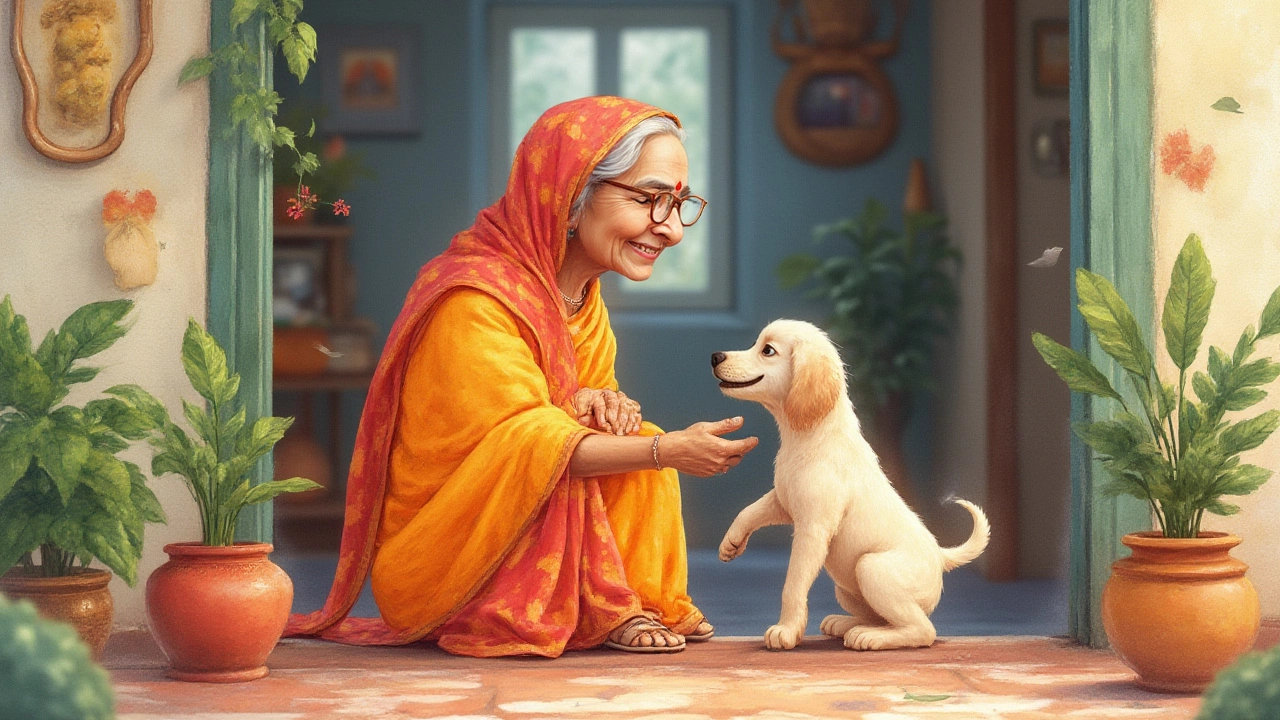
Training Tactics That Actually Work
You’ll find hundreds of training hacks online, but the basics haven’t changed much: timing, positive reinforcement, supervision, and patience—plus a little humor. Housebreaking isn’t about scolding or rubbing noses. It’s about helping your puppy potty training journey click with your puppy’s developmental timeline. So, what works for real people, with real-life schedules?
- Frequent Potty Breaks: Set timers if you have to. Every hour or two, especially after sleeping, eating, or playing, take your puppy to their spot. Even if they give you that “again?” look.
- Pick a Spot: Dogs have a strong urge to go where they've gone before, so pick a potty spot outside and praise (treats work, but your silly voice is sometimes better).
- Watch and Learn: Puppies do the potty dance. This usually means sniffing, circling, or even just pausing mid-play. The moment you see it, hustle them outside.
- Limit Freedom: Roaming means accidents. Keep young puppies where you can see them, or use a leash indoors. If you can’t watch, a crate is safer and warmer than a cold, wet floor.
- Positive Reinforcement: Shouting or punishment backfires. Your job? Throw a party every time the pup does their business outside—even in the rain, even at 3 a.m.
- Establish Routines: Dogs thrive on routine. Keep walks, meals, and bedtime on a schedule—it helps their bodies predict, so accidents drop dramatically.
- Limit Water (within reason): Don’t restrict water during the day, but pick it up a couple hours before bedtime once the puppy is older than 10–12 weeks. Not for baby puppies, though—they need easy access so they don’t get dehydrated.
- Clean Up Thoroughly: Any leftover scent tells your puppy, “This is the spot!” Use an enzyme-based cleaner (you can grab one from any pet store). Regular cleaners leave invisible smell-maps. If your puppy gets it, so might any visiting dogs.
- Gold Star for Nighttime: Most young puppies can’t hold it all night. Set an alarm for a middle-of-the-night trip, and keep the fuss minimal—no play, just a quick break, and back to bed.
- Don’t Skip Vet Visits: If accidents happen constantly, or suddenly after some success, see your vet. Peeing in strange places or peeing more often can be signs of urinary tract infections or health problems.
Every dog trainer from here to Helsinki will tell you—expect accidents. Football players fumble, authors rack up rejections, and puppies pee inside. It’s part of learning. If you slip up and yell, don’t stress. Dogs pick up on routines, not guilt trips. And no dog has ever learned to pee outside because someone yelled at them—science backs it up. Instead, make it easy to do the right thing, and hard to do the wrong one.
If you’re struggling, try keeping a potty log. Write down what times your puppy eats, drinks, plays, and potties. You’ll notice a rhythm. No two puppies are exactly the same, but the log will clue you in on your own dog’s superpowers—or weak spots.
Technology’s even gotten into the act: there are smart pet cameras, apps, and reminders you can use for tracking. But even without all that, stick with the routine, keep cleaning up, and remember, every dry day is a little victory.

What to Expect Month by Month—and When to Worry
So let’s put this into a timeline. From 8–12 weeks, don’t be shocked if your new arrival seems to go every 30–60 minutes while awake. It’s not stubbornness, it’s just anatomy. When you move into the 3 to 4-month window, most pups start to build longer stretches between potty breaks. Around 4 months, a lot of puppies can manage up to 4–5 hours during the day. By 5–6 months, many pups can stay dry overnight (unless you let bedtime slide late or give a late-night snack). Each breed, each puppy, brings its own mix, though. A Labrador may breeze through housebreaking, while a Yorkie or Dachshund might need months more.
Between 6–8 months, your puppy should be getting pretty reliable if you’ve stuck to training. Still, don’t expect perfection—an excited greeting, a thunderstorm, or a house full of strangers can still trigger an accident out of nowhere. That’s just life with a young dog. If you’re still dealing with daily accidents past 8 or 9 months, look back at your routine, check with your vet, and see if any stressors are setting your dog back.
There’s also the kicker of “submissive urination.” This isn’t rare, especially for shy or nervous puppies. If your pup squats and pees when you walk in the door or during greetings, they might be showing too much respect instead of misbehaving. This usually fades as confidence grows, but gentle, calm hellos (no looming, no loud noises) can help.
If your puppy suddenly starts peeing in the house after months of dry days, it’s time to play detective. Ask yourself: Has there been a big change? A visitor, a move, a new pet, or even a missed walk can set things off. But also tough it out and rule out urinary tract infections, kidney issues, or diabetes—especially if your puppy also seems more tired, thirsty, or “off.” Catching these early keeps everyone healthier.
Throughout all of this, patience wins. Some families find their new puppy is house-trained in a few weeks—those are the outliers. For most people, steady improvement with a few setbacks is totally normal. Celebrate the small wins, stock up on good cleaner, and laugh at the misses. Dog ownership comes with a few puddles—and, if you stick at it, a dry, happy, grown-up dog who never sneaks off to the corner again.
So, the big question: When should a puppy stop peeing in the house? There’s no switch-flip age, but if you’re hitting the 6 to 7-month mark, your dog should be well on the way. Anything later? It might be time to tweak your training or chat with your vet. Remember, every dry day gets you closer to a future with clean floors—and maybe one more reason to love that perfectly-imperfect pup snoring at your feet.

